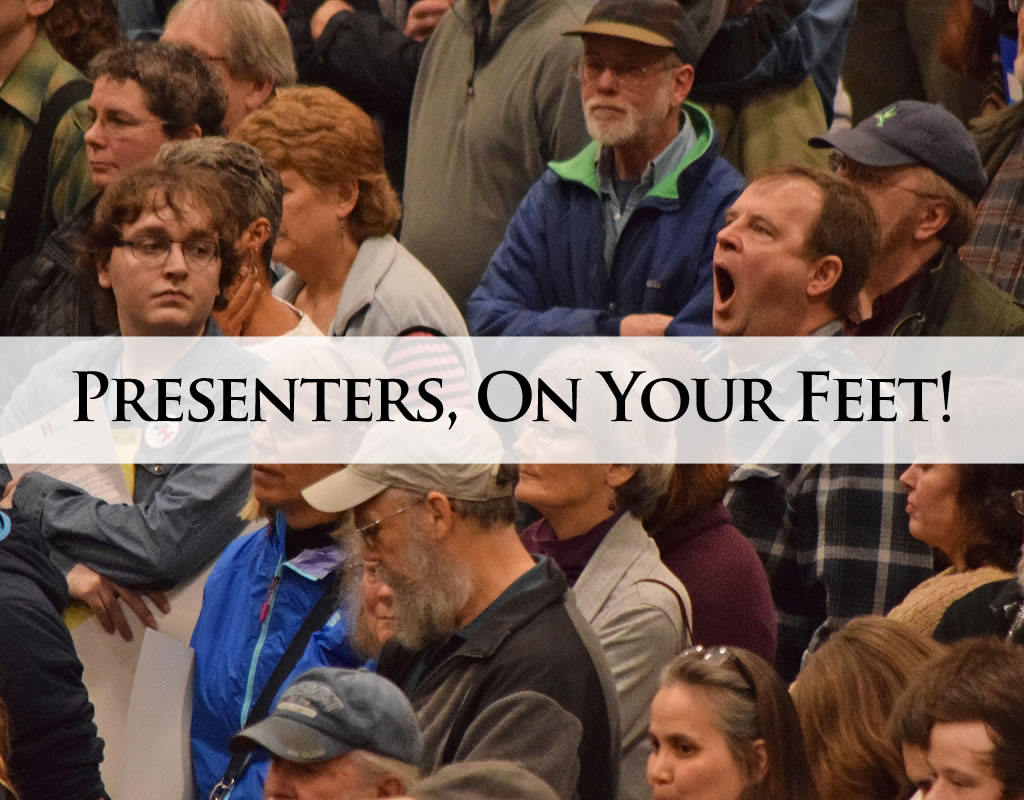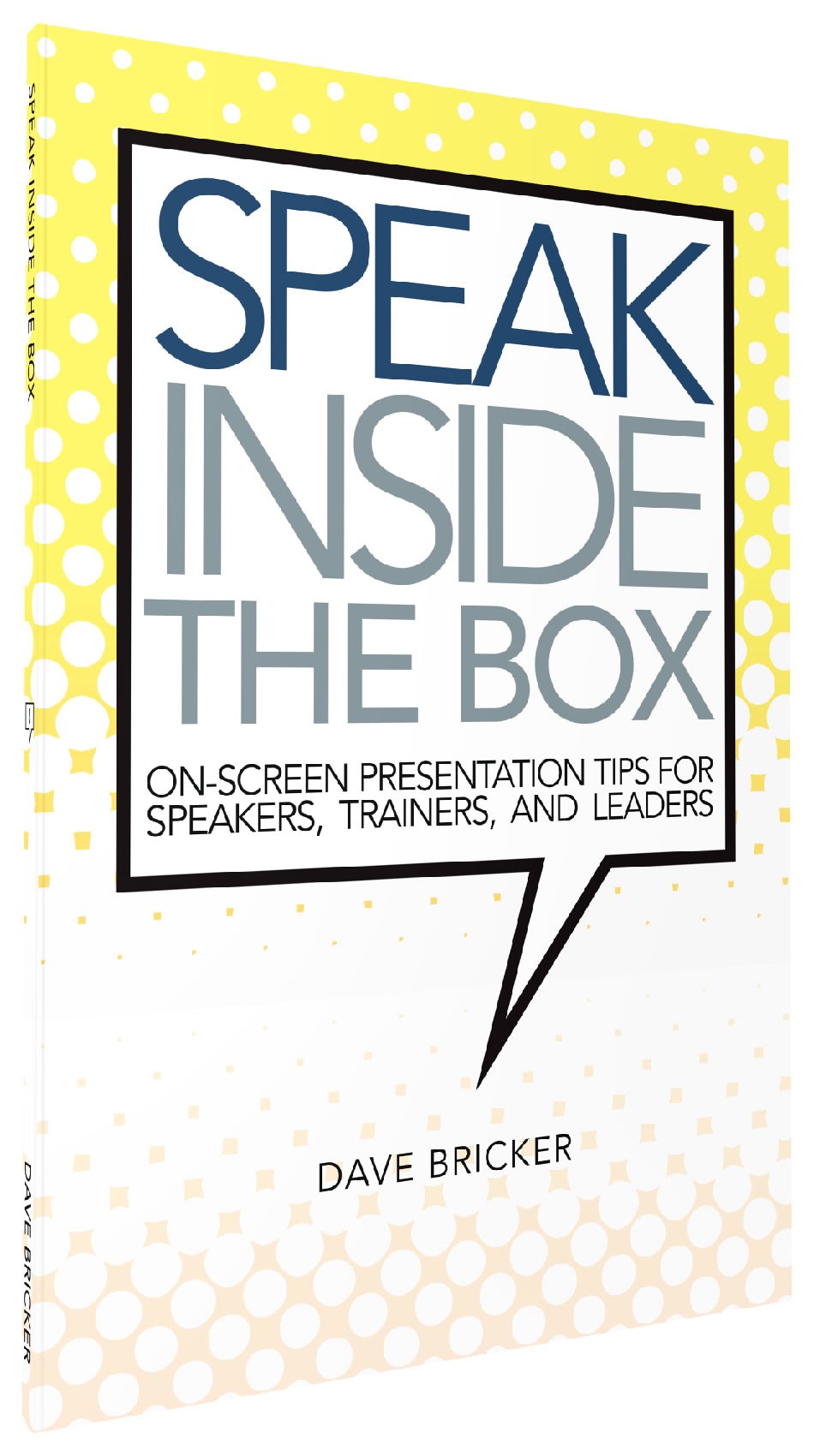Speak Standing Up!

I’ve been videoconferencing for years; this will be easy! I thought as I began my first virtual speech. When it was over, I was surprised at my lackluster performance, and by the number of filler words I used—ums, ers, and ahs—speaking habits I had worked to banish from my presentations a long time ago.
What just happened?
Because I had been “videoconferencing for years,” I slipped into “conversation mode.” I sat in my chair in front of my webcam and instead of delivering a dynamic speech, I gave a well-organized lecture. Boring!
Conversation is natural, informal, and easy to engage in from a sitting position. But try speaking dynamically from a chair and you’ll find yourself gagged and bound. Fitting a speech into a head-and-shoulders-sized video “box” is awkward and diminishing. Sitting compresses the diaphragm and interferes with vocal projection. Some newscasters and other broadcast performers do learn to perform effectively while seated—and there is much to be learned from watching them—but broadcasters rarely employ the same range of volume, intensity, and pitch that professional speakers do. When performance dynamics exceed the size of the performance area, most speakers “shrink to fit.”
Speak standing up. Public speaking is usually performed on your feet. Stage positioning “anchors” characters, ideas, and points in the timeline of the narrative. Hand and body gestures create emphasis. Adapting these stage skills to the virtual world is a challenge worth mastering. If you want to participate in casual meetings and discussions, your built-in webcam and microphone will do the job. If you want to look polished and professional on-screen, this equipment will not be sufficient.
Some argue that standing farther from the screen reduces the “intimacy factor.” Consider that if you’re on your feet, you can get just as close to the camera as you can when seated. Proximity becomes part of your stagecraft: Back away for dialogue or demonstration. Move in close to let the audience in on a big secret. Why not make “intimacy” a performance variable that you can control along with pitch, volume, and intensity?
To speak standing up and become a “virtualoso” presenter, you’ll need a bigger stage—actual or virtual. The “talking head” approach is not conducive to effective on-screen presentations. The popular but erroneous question of “How can I deliver my speech through a webcam?” is analogous to “How can I eat my steak through a straw?”
If you’re a professional trainer, speaker, leader, or other presenter, you need a professional videoconferencing set-up for meetings and discussions, and a separate set-up for presentation and performance.
Check out my new book on virtual speaking, available on Amazon.com.



